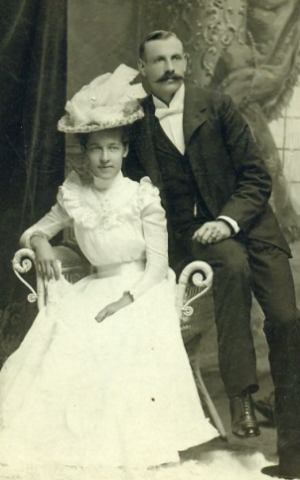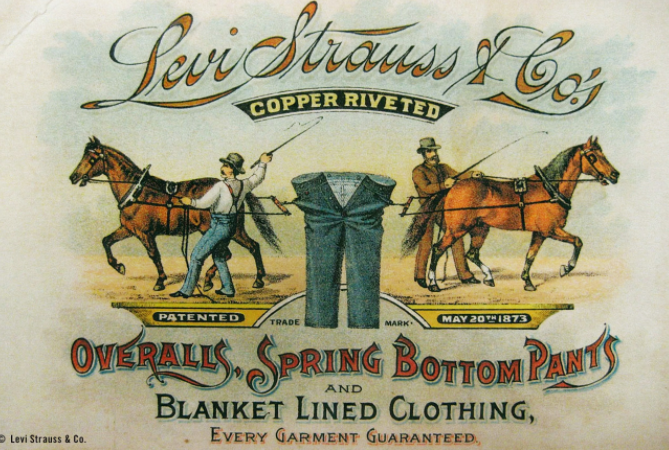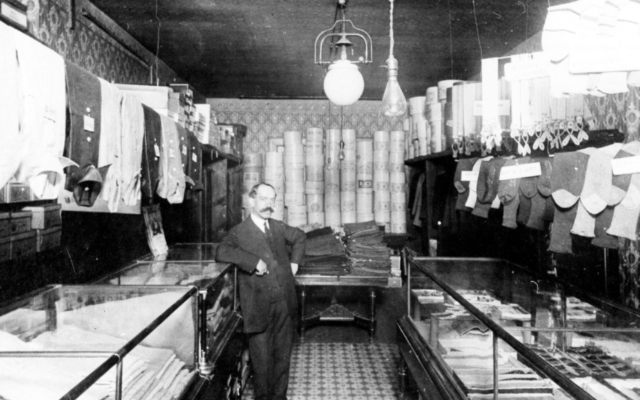AJFF Premieres Jews Who Built the ‘Wild’ West
Amanda Kinsey’s documentary film, about the Jews who helped settle the frontier, premieres at the AJFF.
“Jews of the Wild West,” which premieres at this year’s Atlanta Jewish Film Festival, is a relative rarity. The documentary film, about a neglected aspect of American Jewish history, is produced by someone who actually lives in the community the film discusses. Moreover, it largely relies upon locally sourced historical materials and was financed by local and regional donors.
Amanda Kinsey, the writer and producer behind the film, found much of her material in the extensive archives of the Rocky Mountain Jewish Historical Society at the University of Denver.
Over a three-year period, including two years navigating the restrictions imposed by the COVID pandemic, Kinsey pieced together a broad history of the westward migration of American Jews and the often-significant role they played during the decades prior to the beginning of the 20th century.
“I was totally blown away,” she said. “I mean, the stories were so incredible and compelling and revelatory, and although much of the material centered on Colorado, as I looked around a little bit more, I realized there were equally impressive stories in New Mexico and Texas and California that had not been connected in a documentary about the larger Jewish migration movement.”
Kinsey focuses on some of the more important Jewish success stories of the period, such as Josephine Marcus, a Jewish woman who married Wyatt Earp, the legendary sheriff of Tombstone, Ariz.

Marcus was so successful in promoting the Earp saga that he became a popular figure in a string of Westerns, including John Ford’s 1946 classic “My Darling Clementine,” starring Henry Fonda. “The Life and Legend of Wyatt Earp” was another popular prime time TV series on ABC that ran for six years, beginning in 1955. Later, a fictionalized version of Marcus’s life was the subject of a 1983 NBC TV movie, “I Married Wyatt Earp,” starring Marie Osmond.
As the documentary tells it, she and Earp, who were married for 48 years, are buried side by side in a Jewish cemetery in Colma, Calif. Who knew?
There’s also the wildly successful story of Levi Strauss, who became a thriving wholesaler of dry goods in San Francisco, supplying Jewish merchants in the West and along the Pacific Coast. In 1873, he and Jacob Davis, a Jewish tailor in Reno who had emigrated from Latvia, received a patent for a pair of pants that never seemed to wear out. The two of them produced and marketed the first pairs of Levi’s jeans. The rest, of course is history.
As was the case in the American South during the same period, Jewish immigrants from Germany and Bavaria — and only later from Eastern Europe — came to look for opportunities outside of New York and the big cities of the Northeast.
Unlike the South, however, which had been devastated by the Civil War, the West was a land of relative opportunity in the last four decades of the 19th century, as miners joined cattle ranchers to build communities literally overnight.

Jewish merchants and shopkeepers took the lead in creating a sense of purpose for local residents of these communities. According to Kinsey, a handful of Jews in these far-flung new settlements often made the difference between survival and failure.
“A Jewish merchant who opened up a store was a central part of the community. It wasn’t uncommon for the Jewish merchant to also become the first postmaster or the first mayor, really integral in terms of getting schools established — or the first library, or the first fire departments.”
Even Golda Meir went west for a time, starting in 1913. Born Golda Mabovitch in Kyiv (then a part of the Russian Empire), she went to high school in Denver, met her future husband, Morris Meyerson and became a fervent Zionist there, making the decision to move to Israel a precondition for her marriage.
“Jews of the Wild West” shines a bright light on a critical chapter of the American Jewish story that deserves to be told.
“These are important stories for people to know about,” Kinsey says. “And even though I’m not Jewish, I feel a real responsibility as a storyteller, an imperative really to help amplify voices that may have been marginalized.”
To its credit, the Atlanta Jewish Film Festival has chosen to give this film its world premiere, sponsored by The Breman Museum.
- Arts & Culture
- Local
- Bob Bahr
- Jews of the Wild West
- Atlanta Jewish Film Festival
- American Jewish history
- Amanda Kinsey
- Rocky Mountain Jewish Historical Society
- University of Denver
- Jewish migration
- Josephine Marcus
- Wyatt Earp
- Tombstone
- John Ford
- My Darling Clementine
- Henry Fonda
- ABC
- NBC
- Marie Osmond
- Levi Strauss
- Levi’s jeans
- Golda Meir
- Morris Meyerson
- Zionism
- The Breman Museum




comments